
Roots
Consider for a moment the very strands that crown your head, not merely as biological constructs, but as living archives. Each coil, each kink, each wave holds ancestral whispers, a legacy carried through generations. Our textured hair, in its magnificent variations, has always been more than aesthetics; it has been a marker of identity, a canvas for expression, and a testament to resilience across diverse lineages.
When we inquire about how everyday materials, like a cotton pillowcase, interact with this vital part of ourselves, we are not simply asking a scientific question. We are opening a dialogue with the deep past, listening for echoes of how our forebears cared for their crowns, understanding the elemental truths of moisture and friction that have shaped hair practices since time began.
Textured hair represents a living archive, embodying ancestral whispers and a legacy of resilience across generations.

The Architecture of Ancestral Strands
The unique coiled structure of textured hair, often categorized by its curl pattern and density, carries inherent properties that influence its moisture needs. Unlike straighter hair types, the helical nature of a textured strand creates more points of contact with neighboring strands, leading to increased friction. This morphology also means natural oils, known as sebum, produced by the scalp, do not easily travel down the length of the hair shaft.
Each twist and turn acts as a natural barrier, preventing the smooth descent of these nourishing lipids. Consequently, textured hair tends towards dryness, a biological reality that generations of communities have intuitively understood and managed through carefully developed practices.
From ancient Kemet to the vibrant communities of West Africa, knowledge of hair’s intrinsic thirst guided traditional care. Early practitioners recognized that the hair’s outer layer, the Cuticle, composed of overlapping scales, served as a protective shield. When this shield was smooth and flattened, hair retained its precious internal moisture.
Disruptions to this delicate alignment, such as those caused by harsh environments or rough handling, could lead to loss of hydration and vulnerability. This understanding, while perhaps not articulated in modern scientific terms, formed the bedrock of ancestral hair wisdom, passed down through touch, observation, and communal ritual.
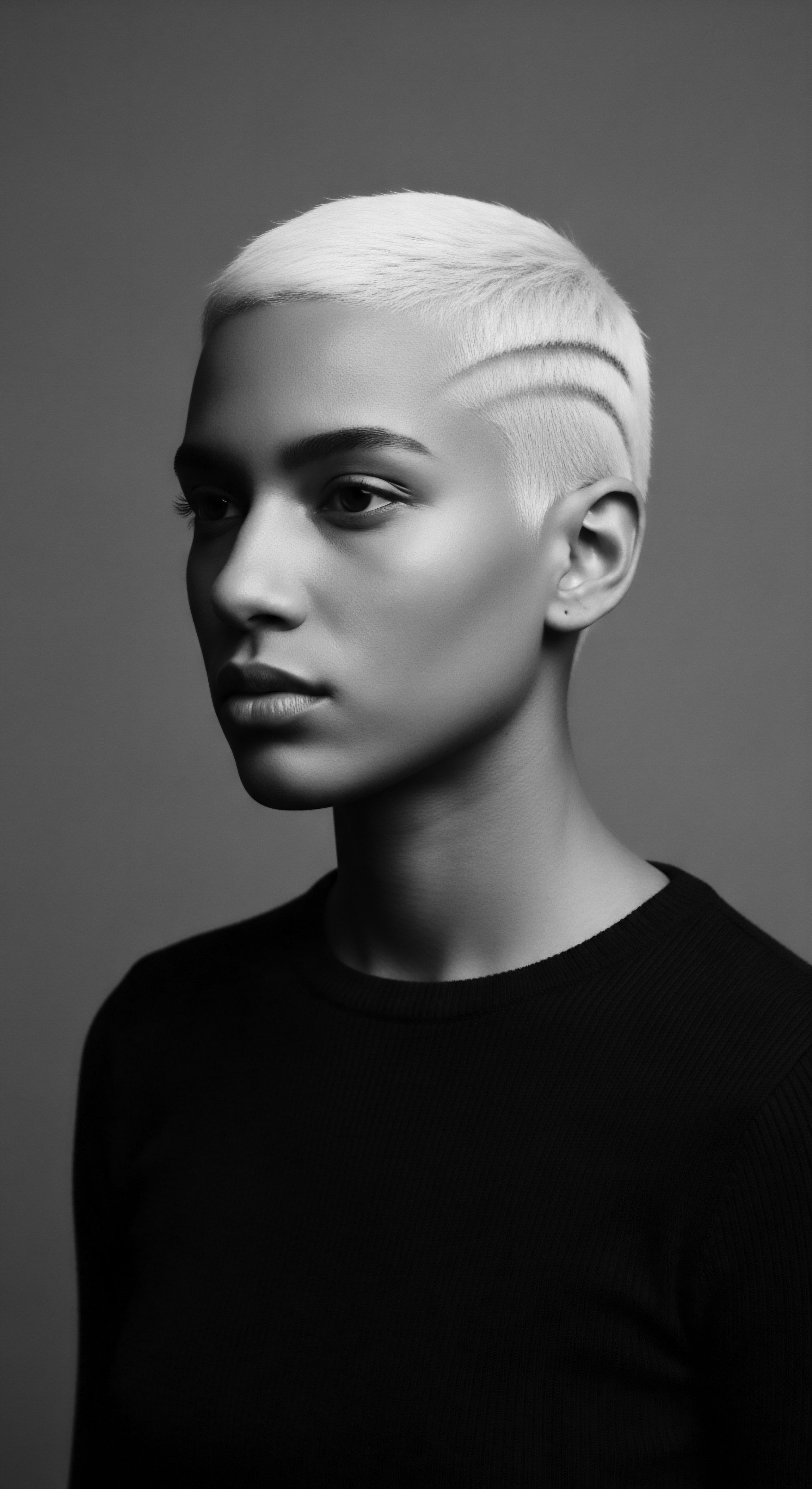
Early Classifications of Hair Properties
While modern hair typing systems categorize curls with numerical and alphabetical descriptors, earlier communities recognized distinct hair characteristics based on their tactile feel, visual appearance, and how they responded to local environmental conditions and available resources. These observations were pragmatic, guiding choices in botanical ingredients and styling techniques. For instance, some hair might be described as “cloud-soft,” while other types possessed a “resilient spring,” each demanding a different approach to care to maintain its inherent vitality. These classifications, born from lived experience, anticipated much of what contemporary trichology now delineates.
The traditional lexicon of textured hair extended beyond mere description; it informed how communities viewed and cared for each other’s hair. This communal understanding fostered a sense of shared responsibility for maintaining hair health, contributing to collective well-being.
- Oils ❉ Ancient communities across Africa utilized a myriad of natural oils and butters for hair moisture and protection, including Shea Butter, Coconut Oil, and Marula Oil, recognizing their emollient properties.
- Clays ❉ Materials like Rhassoul Clay from Morocco and Oka Clay from Namibia were traditionally used for cleansing and moisturizing, demonstrating a deep understanding of natural elements for hair care.
- Herbs ❉ Specific herbs and plant extracts, such as Chebe Powder from Chad, were employed for length retention and moisture sealing, highlighting an ancestral pharmacopoeia for hair health.

Ritual
The care of textured hair has always been a practice imbued with purpose, moving beyond simple hygiene into realms of communal bonding, artistic expression, and cultural preservation. From intricately braided styles that served as a visual language to the meticulous application of plant-based elixirs, each gesture in the tradition of textured hair care has been a ritual of intention. This heritage of deliberate care brings us to consider how our modern sleep environments, specifically the very fabric beneath our heads, interacts with these delicate, moisture-seeking strands. The seemingly innocuous cotton pillowcase, ubiquitous in many homes, has a story to tell within this larger narrative.
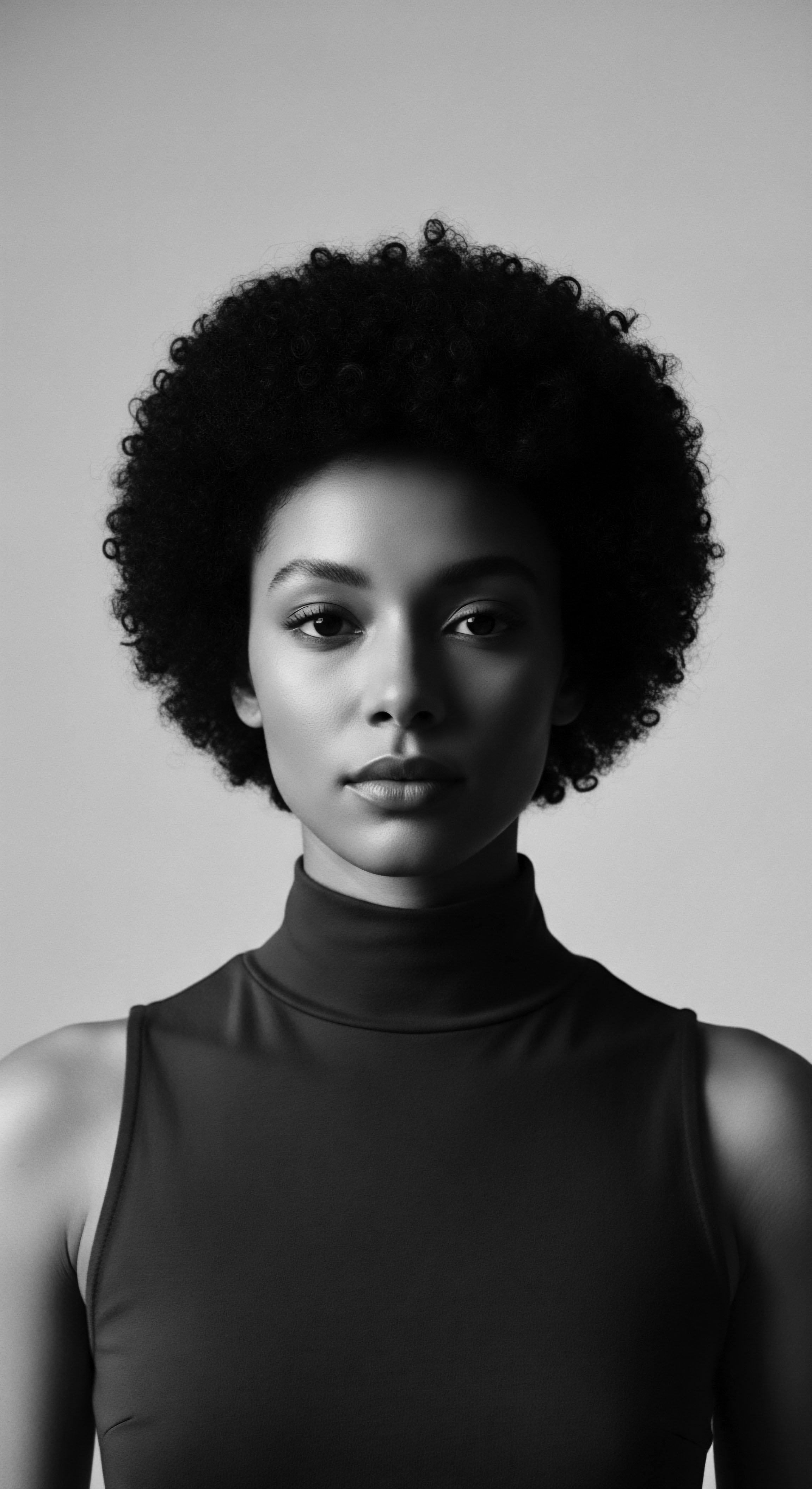
Protective Hairstyles Across Time
Protective styling, deeply rooted in African and diasporic traditions, serves a fundamental purpose ❉ to safeguard the hair’s ends, minimize manipulation, and retain moisture. Styles like Cornrows, Braids, and Bantu Knots were not merely aesthetic choices; they were ingenious solutions for preserving hair health in varied climates and circumstances. These styles encapsulated strands, providing a physical shield against environmental aggressors and reducing the constant friction that can lead to dryness and breakage. This ancient wisdom, practiced through centuries, understood the hair’s vulnerability and sought to mitigate it through protective measures.
Consider the daily movements of life, even in repose. As one shifts during sleep, hair rubs against surfaces. For textured hair, with its unique structure, this friction can be particularly detrimental. Each rub can lift the delicate cuticle layers, inviting moisture to escape and leaving the hair rough and prone to tangles.
The ancestral practices of covering hair at night, using materials often smoother than typical sleep surfaces, were a direct response to this fundamental challenge. The foresight of these methods, long before modern scientific explanations, is striking.
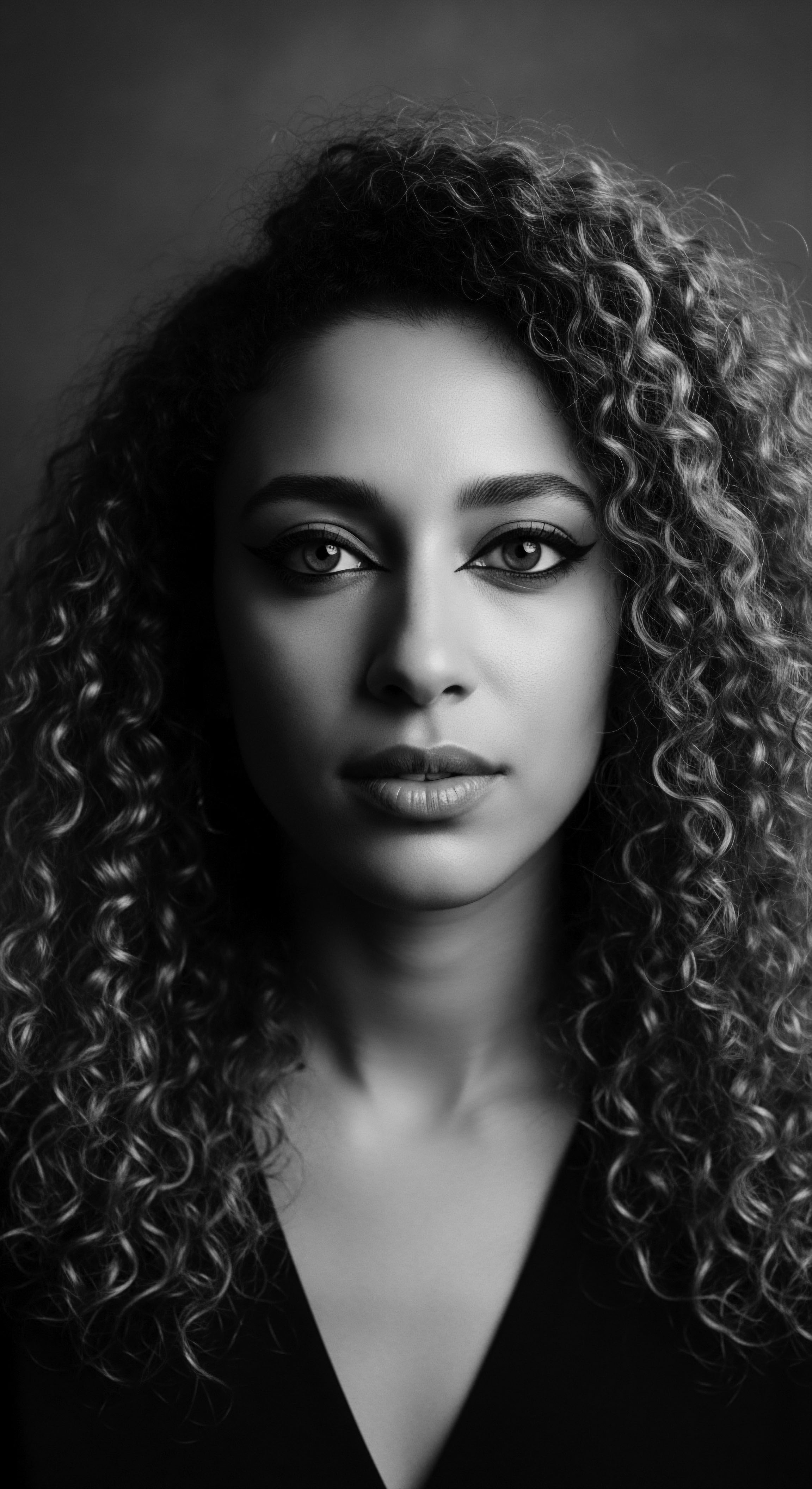
Traditional Tools and Their Gentle Touch
The toolkit of textured hair care, passed down through generations, often favored natural materials and designs that honored the hair’s integrity. Wide-toothed combs, crafted from wood or bone, were used to gently detangle, respecting the hair’s inherent curl pattern and minimizing tension. The application of warmed oils, a widespread practice, softened strands, making them more pliable and less susceptible to the pulling and tugging that coarse fabrics can inflict. These historical instruments and methods contrast sharply with the passive interaction of hair against a cotton pillowcase, which lacks the intentionality of protective care.
Ancestral traditions of hair protection, including night coverings and gentle tools, foreshadowed modern understanding of moisture retention and friction management.
| Ancestral Practice Head Wraps & Bonnets (various cultures) |
| Traditional Purpose Protection from elements, preservation of style, cultural identity, nighttime hair shield |
| Modern Parallel/Understanding Reduces friction, retains moisture, minimizes tangles and breakage during sleep |
| Ancestral Practice Oiling & Butters (e.g. Shea, Coconut) |
| Traditional Purpose Moisture retention, scalp health, softening hair |
| Modern Parallel/Understanding Emollient, sealant, scalp conditioning, barrier against moisture loss |
| Ancestral Practice Protective Braids & Twists |
| Traditional Purpose Minimizes manipulation, length retention, cultural expression |
| Modern Parallel/Understanding Reduces mechanical stress, protects ends, helps maintain moisture balance |
| Ancestral Practice These practices underscore a continuous legacy of care, adapting through time while holding core principles. |
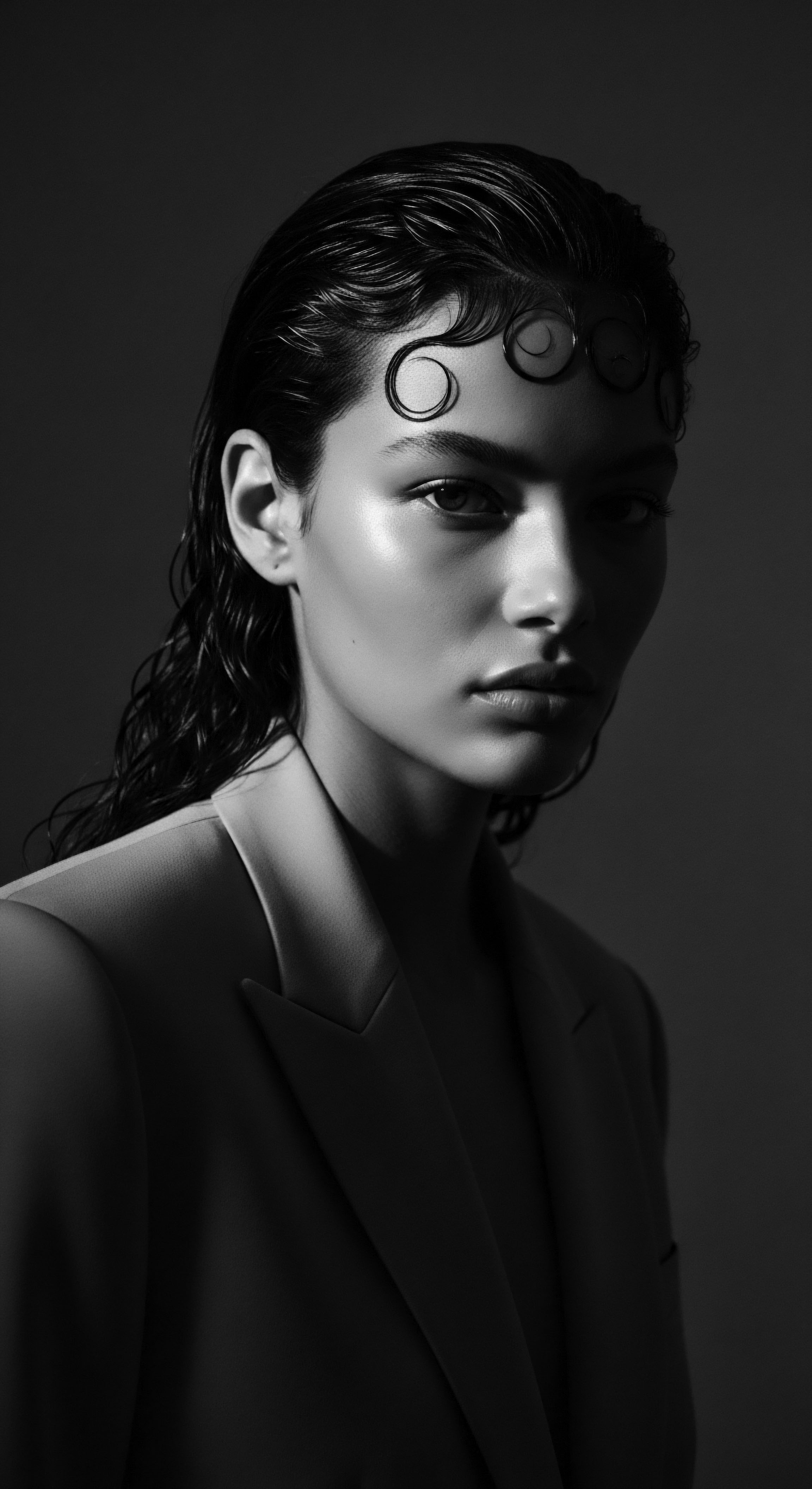
Relay
The journey of textured hair care, from ancient ritual to contemporary understanding, transmits invaluable lessons across generations. One such lesson, often learned through experience and then validated by scientific inquiry, pertains to the environment where our hair rests for hours each night. The seemingly benign cotton pillowcase can, for textured hair, become a subtle drain on its vitality, working against the very goal of moisture retention. This phenomenon, while scientifically explainable today, finds its counterpoint in centuries of ancestral practices designed to safeguard delicate strands.
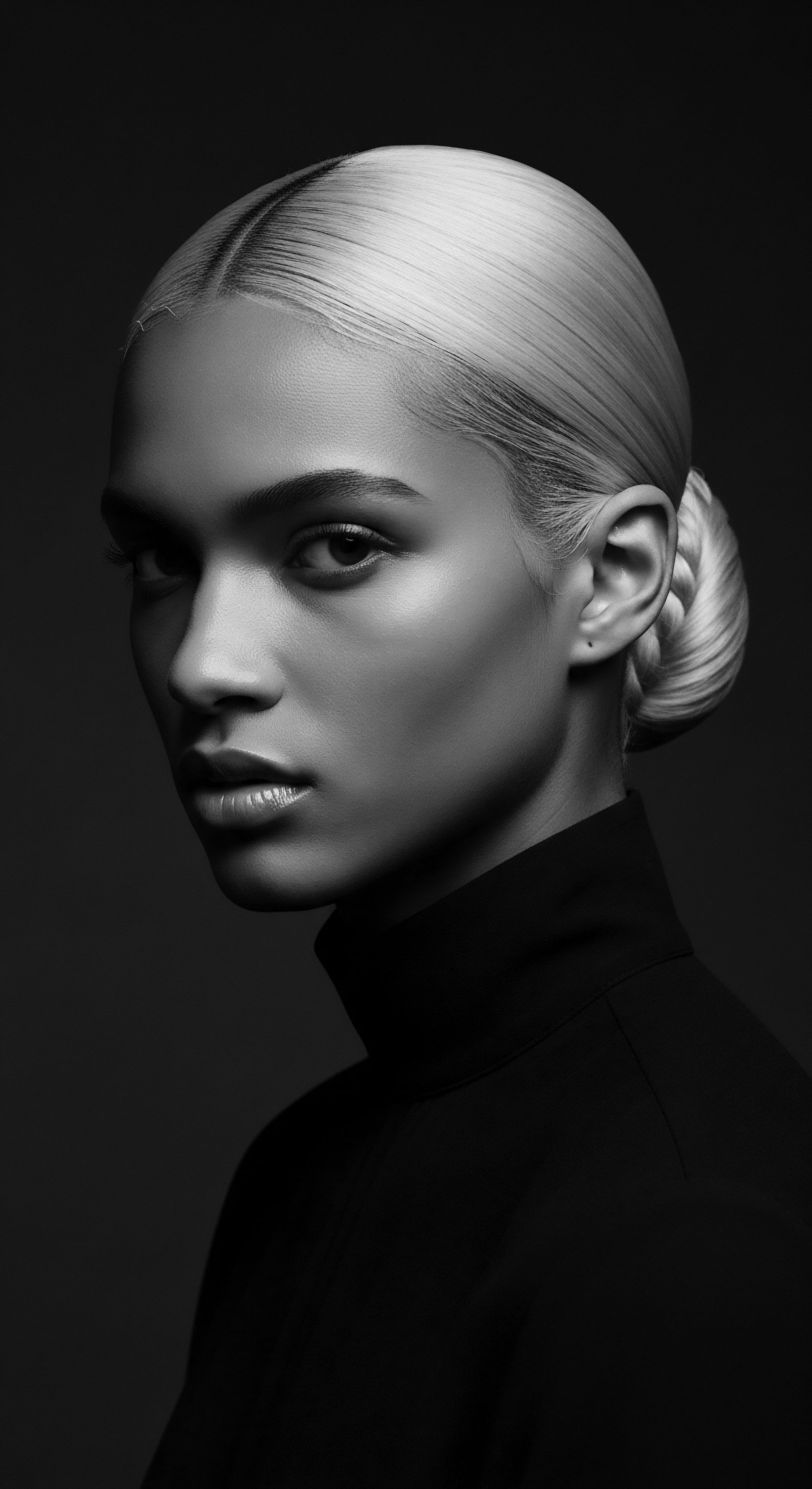
The Porosity of Cotton on Delicate Hair
Cotton, a natural fiber, possesses a highly absorbent quality due to its cellulosic structure. While beneficial for towels and apparel, this characteristic becomes a challenge for textured hair. The cotton fibers act like tiny sponges, drawing moisture from the hair shaft as one sleeps.
Textured hair, already prone to dryness given its coiled morphology and the difficulty of natural oils distributing along the strand, becomes even more susceptible to dehydration when in prolonged contact with such a material. The constant absorption of water and natural sebum leaves the hair parched, contributing to frizz, brittleness, and a lack of elasticity upon waking.
Scientific studies confirm this observation. Research comparing different pillowcase materials consistently shows that cotton can absorb significantly more moisture than smoother alternatives like silk or satin. This absorption directly translates to a depletion of hydration from the hair, especially for those with hair textures that naturally struggle to retain moisture. The result is a cycle of dehydration that undermines diligent efforts at conditioning and moisturizing.

Why Does Cotton Impact Moisture Levels?
Consider the microstructure of a cotton fiber. Its surface, under magnification, appears rough and uneven. As hair rubs against this textured surface throughout the night, friction is generated. This mechanical abrasion causes the hair’s outermost protective layer, the Cuticle, to lift and become frayed.
When the cuticle is raised, the internal moisture of the hair escapes more readily into the surrounding air, and crucially, into the absorbent cotton fibers. The damage extends beyond moisture loss; it compromises the hair’s structural integrity, making it more vulnerable to breakage and split ends.
Cotton’s absorbent nature and rough texture collaborate to deplete textured hair of vital moisture and create cuticle-damaging friction during sleep.

Echoes of Protection in Nightly Rituals
Long before the advent of modern textiles or scientific analysis of hair’s molecular structure, Black and mixed-race communities intuitively understood the need for nightly hair protection. This knowledge wasn’t born from laboratory findings; it arose from a lived connection to hair, recognizing its delicate balance and the environmental factors that could disrupt it. The tradition of wrapping hair at night, whether with a simple cloth, an elaborate head tie, or eventually, satin-lined bonnets, was a practical and profound act of care.
During the era of the transatlantic slave trade, when many ancestral practices were forcibly suppressed, the act of hair wrapping persisted as a quiet yet powerful form of resistance and cultural continuity. Enslaved women, stripped of much, held onto their hair as a symbol of identity and dignity. Protective head coverings, often improvised from available materials, became an essential tool for preserving hair from damage during strenuous labor and the harsh realities of their existence. This practice extended to nighttime, where a simple cloth could mean the difference between maintaining a semblance of healthy hair and succumbing to extreme dryness and breakage.
This cultural adaptation demonstrates a deep, ancestral understanding of hair’s physical needs, even under duress. Helen Bradly Griebel’s work, “The African American Woman’s Headwrap ❉ Unwinding the Symbols,” highlights how the headwrap, initially enforced as a marker of subservience, was transformed into an expression of empowerment and a representation of African American history, protecting both hair and spirit through challenging times. This historical example powerfully illustrates the enduring practice of hair protection through fabric barriers, directly addressing the very problem cotton pillowcases present.

The Ancestral Imperative for Hair Preservation
The ancestral wisdom that guided night protection was not merely about avoiding bedhead; it was about preserving the intrinsic moisture and structural integrity of hair that was, and remains, often susceptible to environmental stripping. This proactive care ensured hair remained pliable, less prone to breakage, and maintained its natural luster. The choice of smoother fabrics for head coverings, such as silk or satin (where accessible), was an intuitive recognition of their lower friction properties and their inability to aggressively absorb hair’s natural moisture.
- Head Wraps ❉ From the vibrant geles of Nigeria to the practical wraps used during slavery, head coverings served as a primary defense against dust, sun, and friction during sleep.
- Oiled Braids ❉ Hair braided or twisted and then sealed with traditional oils before sleep offered a double layer of protection, minimizing moisture loss and mechanical stress.
- Communal Care ❉ The act of braiding or preparing hair for sleep within families and communities reinforced the value of protective practices, passing down essential techniques for hair preservation.
The insights gained from both ancestral practices and modern science converge ❉ cotton pillowcases, by virtue of their absorbent and friction-generating properties, can indeed negatively impact textured hair’s moisture levels. Our heritage provides a compelling blueprint for how to mitigate this challenge, emphasizing protection and the thoughtful selection of materials that honor hair’s natural hydration.
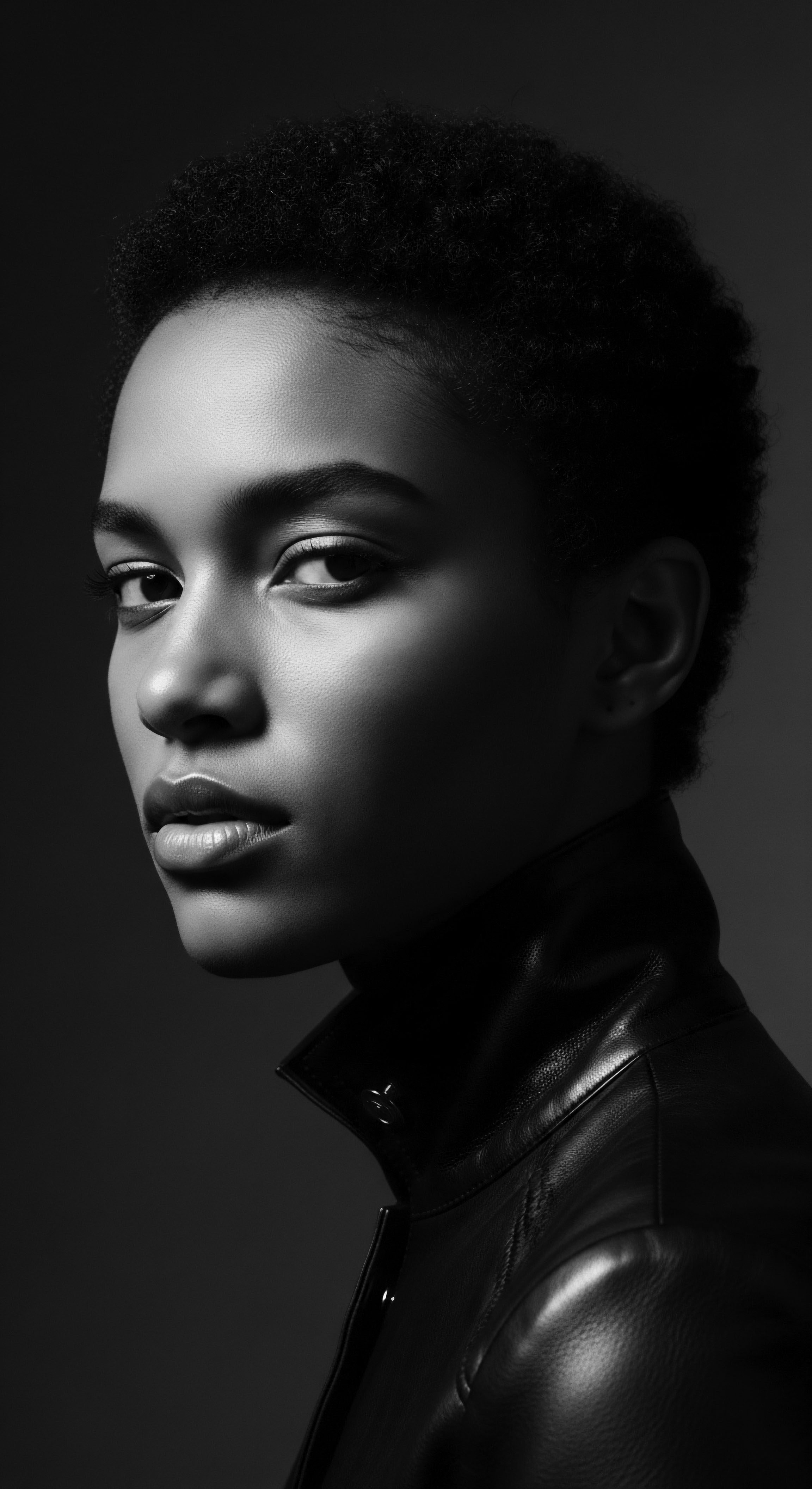
Reflection
As we consider the intimate relationship between our textured strands and the world around us, the simple act of sleeping on a cotton pillowcase unfolds into a profound conversation about heritage, resilience, and the enduring wisdom of hair care. The scientific principles of moisture absorption and friction, now meticulously analyzed in laboratories, mirror the age-old observations and adaptations of our ancestors. They knew, through touch and generations of passed-down knowledge, that certain materials and practices preserved the spirit and vitality of hair.
The story of textured hair is a living narrative, a testament to innovation born from necessity and a celebration of selfhood that has resisted erasure. Our exploration into the seemingly small detail of a pillowcase reveals how deeply interwoven hair health is with cultural continuity and personal well-being. Each choice we make in our hair care routines, from the products we select to the fabrics we rest upon, becomes a reaffirmation of this rich legacy, a gentle nod to the past, and a conscious step towards a future where our crowns are nurtured and celebrated in all their radiant authenticity. This ongoing dialogue between science and tradition allows us to keep the soul of each strand vibrant, a living testament to journeys spanning centuries.
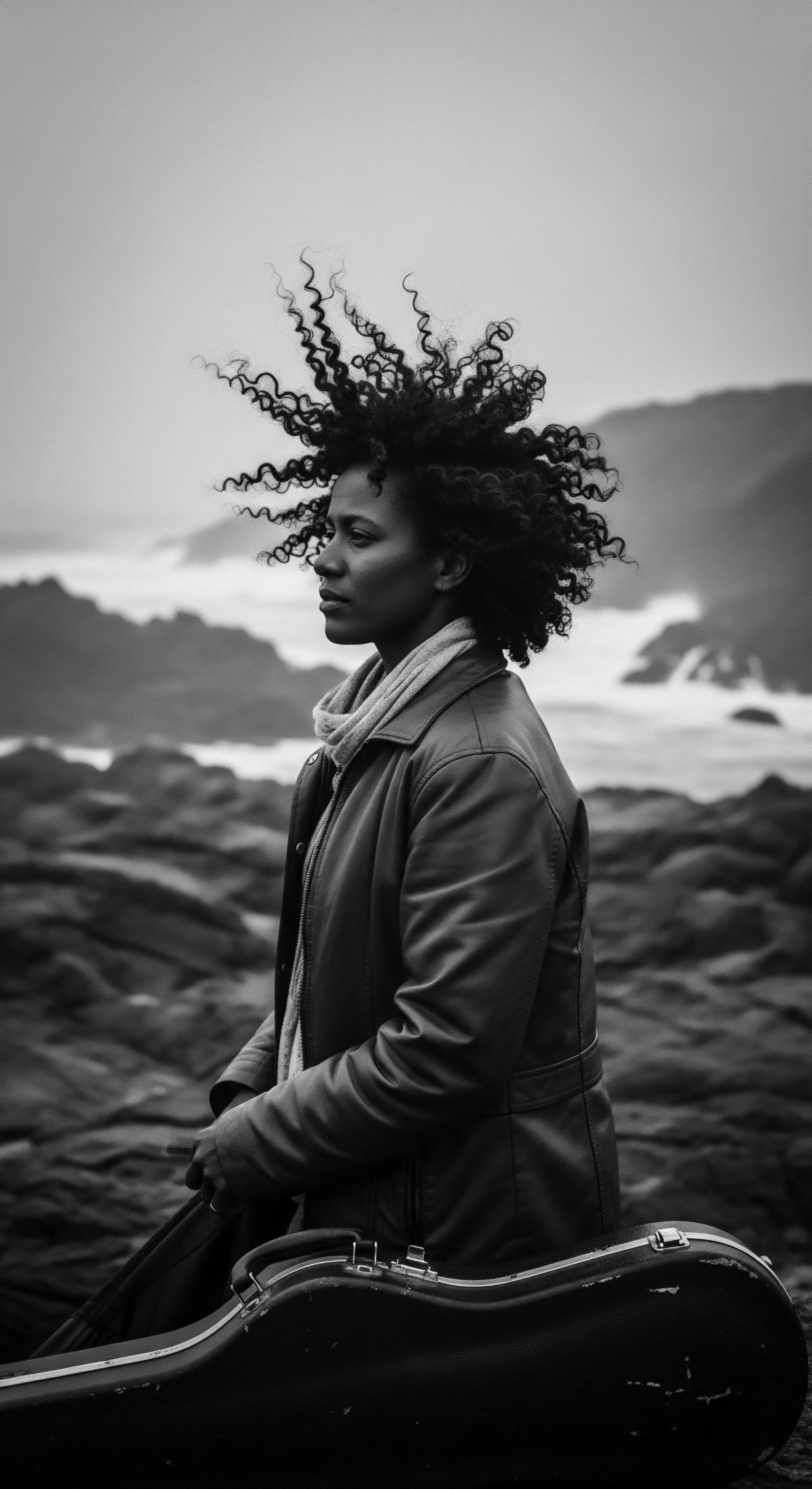
References
- Africa Imports. (2025, January 13). Traditional African Secrets For Long And Healthy Hair. Africa Imports.
- Birico. (n.d.). Silk vs Cotton ❉ Which Pillowcase Is Better for Your Skin and Hair? Birico.
- Blissy. (2025, May 6). Is Silk or Satin Better for Hair? TikTok’s Viral Hack vs. Science. Blissy.
- Chebeauty. (2024, July 22). Nourish Your Roots ❉ Essential Care Guide for Dry Afro Hair Scalp. Chebeauty.
- Clementine Sleepwear. (n.d.). Cotton or silk pillowcases ❉ Which is best? Clementine Sleepwear.
- Fabulive. (n.d.). Rediscovering Historical Hair Care Practices. Fabulive.
- JD Institute of Fashion Technology. (2021, June 23). HEADWRAPS ❉ HISTORY AND EVOLUTION. JD Institute of Fashion Technology.
- Obé Headwear. (2024, August 5). Significance of headwraps | Hair care. Obé Headwear.
- PreacherHead Ministries. (n.d.). A Headwrap Revolution ❉ The History of Headwraps Unwrapped. PreacherHead Ministries.
- The Beauty Chef. (2022, October 31). Do Silk Pillowcases Really Benefit Your Hair and Skin? The Beauty Chef.
- dtex homes. (2025, April 19). Which Pillowcase Is Better for Your Hair? dtex homes.
- Sleep.com. (2021, September 3). How a Hair Wrap Routine Protects More Than Just My Hair. Sleep.com.
- BSB MEDIA. (n.d.). Black Beauty Heritage ❉ History of Headwraps and How to Style Them Today. BSB MEDIA.
- Wilderness. (2015, January 25). The history & meaning of head wraps across Africa. Wilderness.
- Afrostreet. (2025, May 7). The Cultural Significance of Headwraps & How to Wear Them ❉ Embracing Heritage and Style. Afrostreet.
- Chebeauty. (2023, March 30). Ancient African hair growth secrets that EASILY grow healthiest longest natural hair. Chebeauty.
- Museum Conservation Institute. (n.d.). Climate and Textiles Storage. Museum Conservation Institute.
- MDPI. (n.d.). From Fabric to Finish ❉ The Cytotoxic Impact of Textile Chemicals on Humans Health. MDPI.
- FibreGuard. (2022, December 7). How Technology Is Changing the Textile Industry. FibreGuard.
- Headcovers Unlimited. (n.d.). Religious Head Coverings Guide. Headcovers Unlimited.
- Contemporary African-American Hair Care Practices. (2015, May 12). Clinics in Dermatology, 33(3), 353–359.
